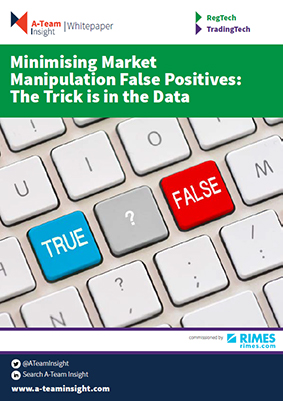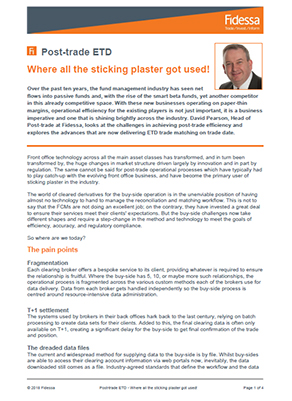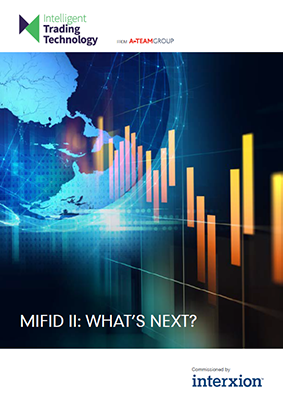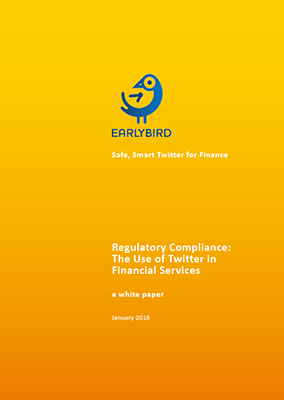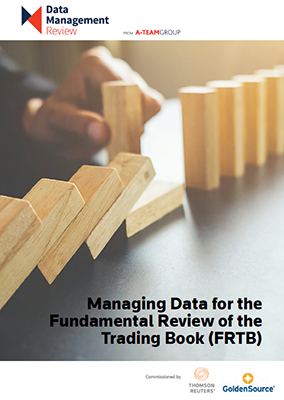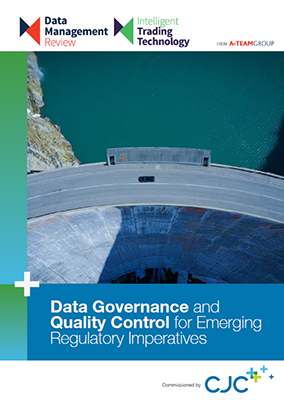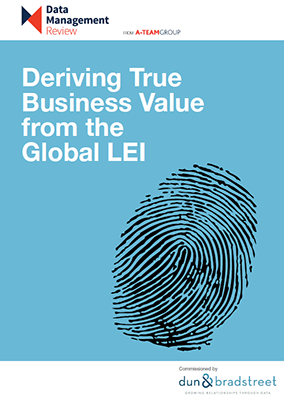RegTech Insight Risk Technologies The latest content from across the platform
Getting Control of Access to Key Market Services
Use of single dealer portals that allow banks to trade assets on behalf of their clients is growing rapidly, particularly among firms in the fixed income and foreign exchange markets in particular. But while trading portals offer great benefits in terms of broader market reach and enhanced client functionality, they bring risks too. Firms are…
Next-Generation Network and Vendor Management: mitigating operational risk in relationship networks
The complex network of relationships that financial institutions have built with multiple partners has created a huge operational burden, resulting in significant operational risk as well as financial and compliance risk. Dating back decades, many of these relationships are now managed as a separate business function, costing organisations millions of dollars. Add in regulatory obligations,…
Minimising Market Manipulation False Positives: The Trick is in the Data
The focus on market manipulation has probably never been higher. In the wake of the Financial Crisis of 2008, with its multiple market manipulation scandals, regulators have ratcheted up compliance requirements for firms. The media has also sharpened its focus – the cost of a controls failure in this area can be catastrophic in terms…
Post-trade ETD – where all the sticking plaster got used!
The fund management industry’s shift to passive funds and embrace of smart-beta funds over the past decade or so has shaved margins to the extreme. In this environment, operational efficiency becomes an existential issue. Across a broad swathe of asset classes, front-office technologies have kept pace with massive changes in market structure driven by regulation…
MiFID II: What’s Next?
With regulators indicating that they will enforce MiFID II in the second half of this year, how robust is your compliance solution? How ready is it to take on the oncoming requirements of the regulation? And to what extent do you need to review and renew systems to achieve a sustainable, industrialised and cost-efficient solution?…
MiFID II: Industrialising the Response Using UL BRIDGE
Many firms within the scope of Markets in Financial Instruments Directive II (MiFID II) struggled to meet the regulation’s deadline of January 3, 2018 and are now waking up to the fact that many of the processes put in place for implementation day are not sustainable. To achieve and maintain MiFID II compliance over time…
Regulatory Compliance: The Use of Twitter in Financial Services
Twitter has emerged as a source of market-moving information. But it’s difficult to get Twitter delivered to your trading desk, for a variety of reasons, ranging from concerns about market abuse, to the proliferation of fake news and the potential risk of reputational damage. By banning Twitter, trading firm management may be seeking to avoid…
Managing data for the Fundamental Review of the Trading Book (FRTB)
FRTB presents banks with a number of organisational, computational and data granularity challenges. These require firms to review the structure of their trading desks, adopt revised risk models, and source extensive data including 10-plus years of time-series data. This white paper, sponsored by Thomson Reuters and GoldenSource, details the regulation’s demand for additional data, examines…
Data Governance and Quality Control for Emerging Regulatory Imperatives
Impending regulations, following recent price manipulation investigations, will require trading firms to have new data governance and quality controls in place. A new benchmarking study by CJC, in association with A-Team Group, conducted amongst professionals within major Tier 1 and Tier 2 sell side institutions, explores the data governance demands posed by new and emerging…
Deriving True Business Value from the Global LEI
The Legal Entity Identifier (LEI) – the free-to-use entity identifier – has established itself as a viable standard for helping financial institutions identify unique business entities that are parties to financial transactions. But it’s widely accepted to have its limitations. In particular, a lack of standardization and ability to link to associated data sets is…




